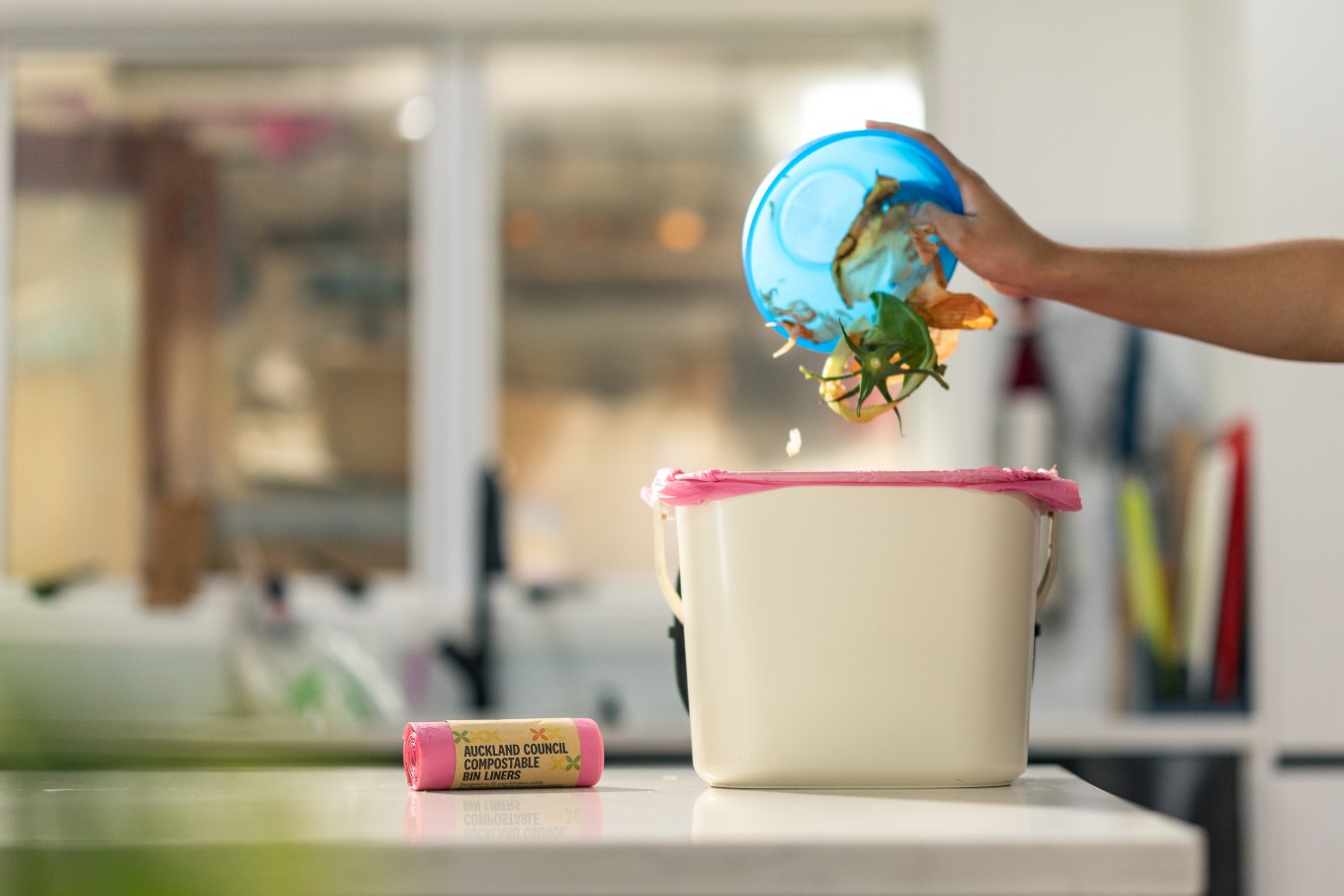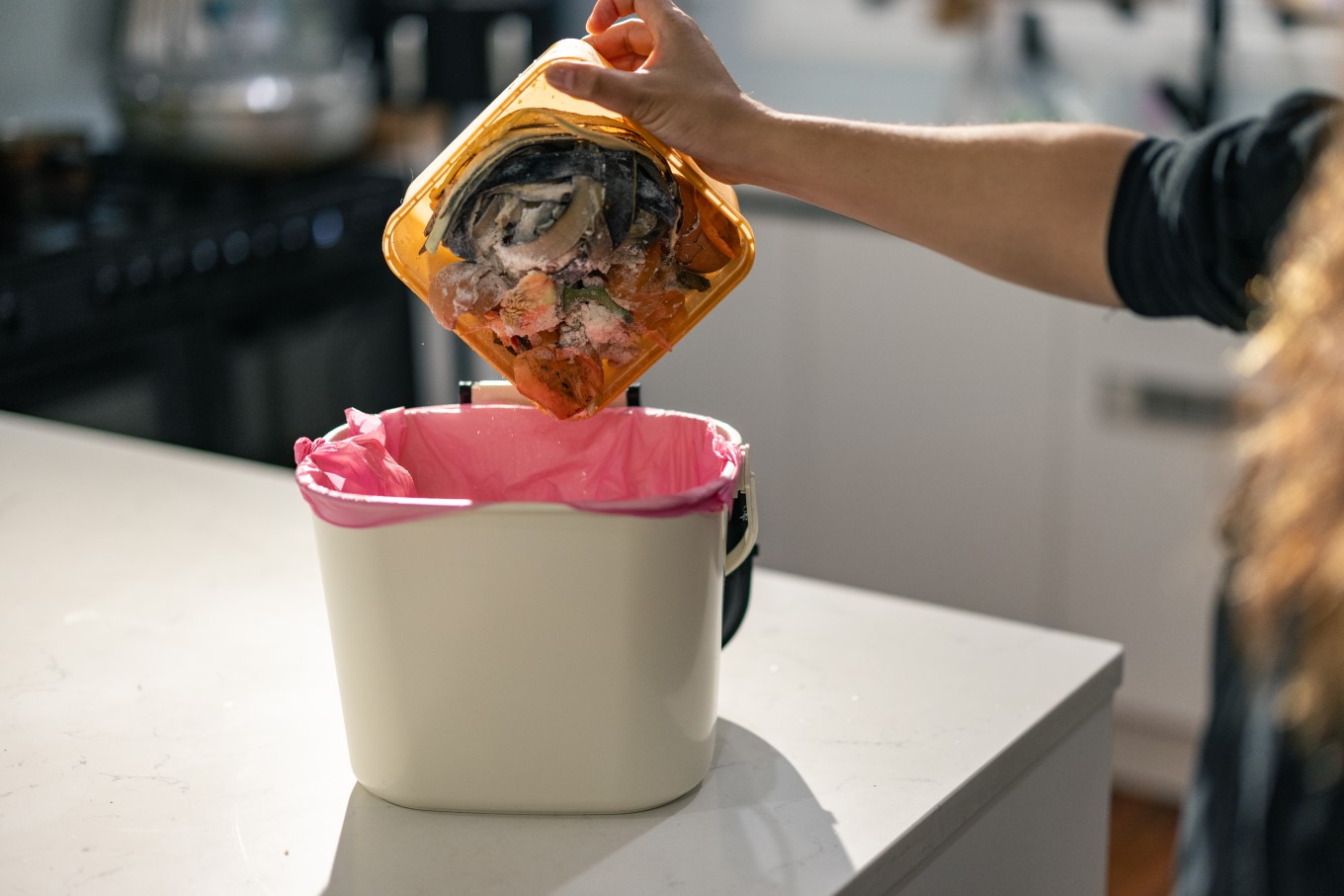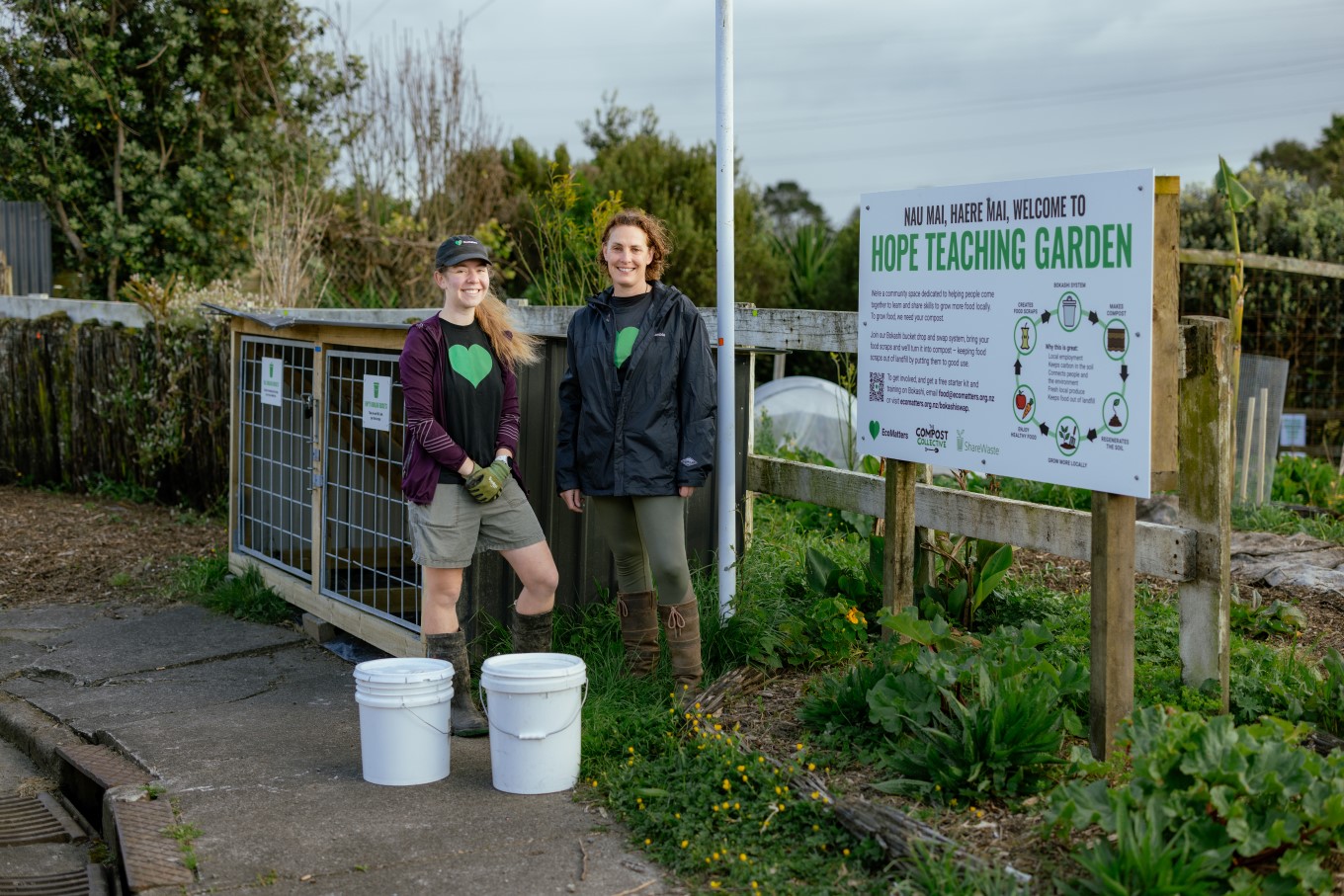If you haven’t noticed the smaller addition to Auckland Council’s household bin family, why not take a stroll up your street on collection day. The new food scraps collection service has been rolling out across most parts of the region since the beginning of 2023. Now, instead of the region’s food scraps ending up in landfill where they turn into methane – a potent greenhouse gas that contributes to climate change – they are taken away to be turned into biofuel and fertiliser.
Like many innovative initiatives, there will be some who are slow to embrace change. If preventing 100,000 tonnes of food waste going into landfill each year doesn’t get you rolling your bin all the way to the kerb, here are some workarounds to the most common complaints about the service.
“Yuck, it’s smelly”
Separating your food scraps and storing them in the benchtop caddy is actually not that different from throwing them in your regular kitchen bin. The Auckland Council pink compostable bin liners for your benchtop caddy are available to purchase from retailers. Just change them every two to three days to avoid spills and reduce food odours. Also, as with your normal household rubbish, if you regularly empty the contents of your benchtop caddy (bag or no bag) into the food scraps bin outside, you can avoid any bad smells in your house.

“I don’t have room for it on my bench”
If bench space is at a premium, store your food scraps in a smaller container with a lid, such as an ice-cream container. Another way to eliminate odours, particularly from meat scraps, is to store the ice-cream container in your freezer, then wait until collection day to empty it into your food scraps bin.

“I already compost, so I don’t need this”
Tau kē (great)! Composting is one of the most efficient ways to recycle food scraps and return nutrients to the soil. However, to lower pest populations (there’s a rat or two lurking near every compost heap), it’s best not to place cooked food or meat products in your compost bin. This is where your food scraps bin comes in handy. You can compost your uncooked fruit and vegetable scraps and dispose of all your other food scraps in your benchtop caddy.
Henderson resident Innes Nisbet, who is a committed composter and zero-waste lifestyler, says that he was initially sceptical about the food scraps service. “At first I wasn’t happy about having to pay $77 per year for a bin I wouldn’t use. But when it arrived, I decided to use it to get rid of bones, onion skins and citrus, seeing as I had to pay for it. Then I figured if people were using it to get rid of their food scraps instead of them going to landfill, I would be happy to subsidise it.”
Amanda Hookham-Kraft is the coordinator for EcoMatters’ Hope Teaching Garden in New Lynn. As part of their mahi, they run a bokashi drop and swap service, in which local schools, businesses and residents are supplied with buckets and everything else they need to turn their food scraps into bokashi, a form of fermented compost. Participants return their fermented scraps to the community garden where they are added to the soil as nutrient-dense plant food. The beauty of bokashi is that you can dispose of your cooked and baked food scraps, unlike traditional composting.
“We have a lot of businesses and residents in the area who are wanting to engage with this because they like the idea of keeping it local and the benefits of the food scraps going back into the soil,” says Amanda. However, she still values the food scraps service as a way of diverting food waste from landfill. “There are a lot of people out there who are putting their food into the bin, but I think we need to not put all our eggs in one basket, so this is where both are amazing.”

“It’s a waste of time and too much extra work”
Providing you keep your benchtop caddy handy, disposing of food scraps shouldn’t be any more work than disposing of food scraps in your regular rubbish. Plus, the bins are collected weekly on the same day as your usual council collection, so it's easy to remember.
If you need more incentive, keep in mind that until now Aucklanders have been sending 100,000 tonnes of food scraps to landfill every year. If some planet-friendly competition gets you going, you might be motivated by the knowledge that Christchurch implemented a food and garden waste collection service in 2009 and many other cities in Aotearoa have food-scraps services in place or about to start them.
“I live in an apartment or unit and there’s no room on the kerb”
If you share a berm with all your neighbours, one way you can make more room for your bins is to group your food scraps bins together. You can also group your recycling and rubbish bins together as well. They get to hang out with their peers and you are helping Auckland reach its goal of being zero waste by 2040.


